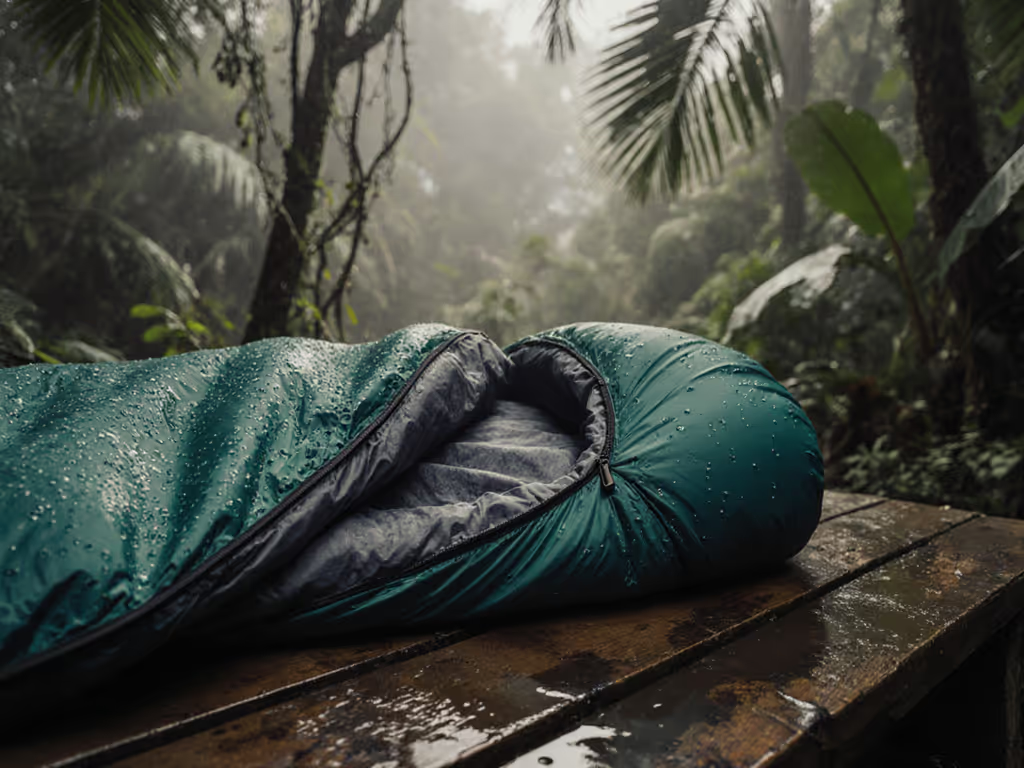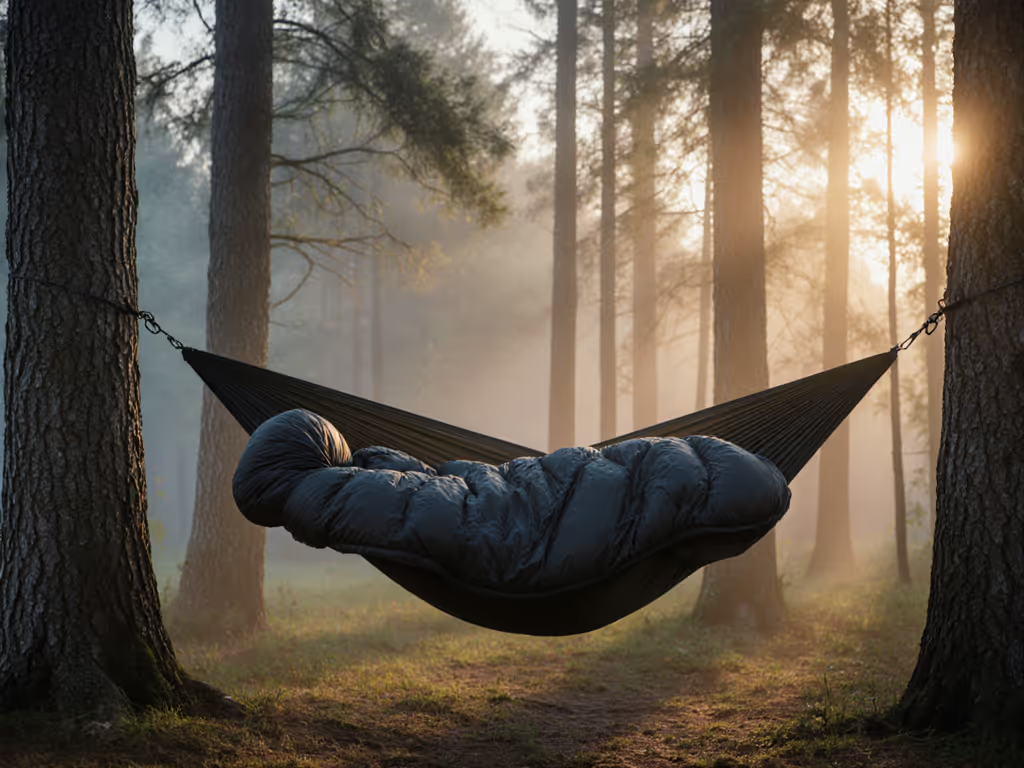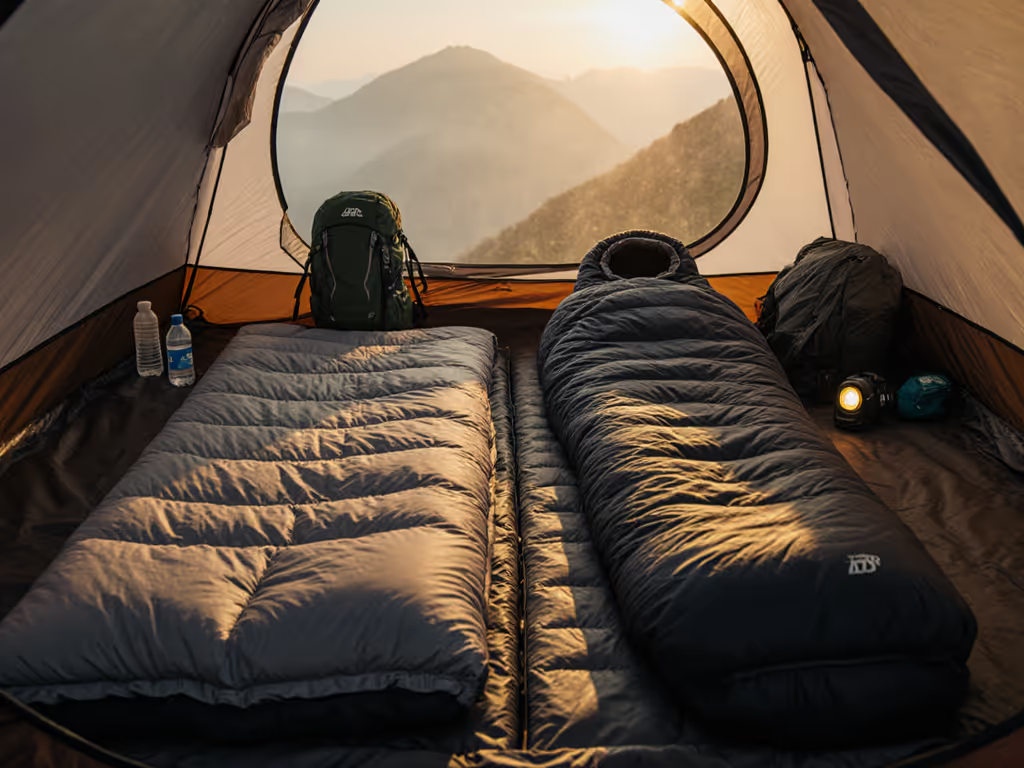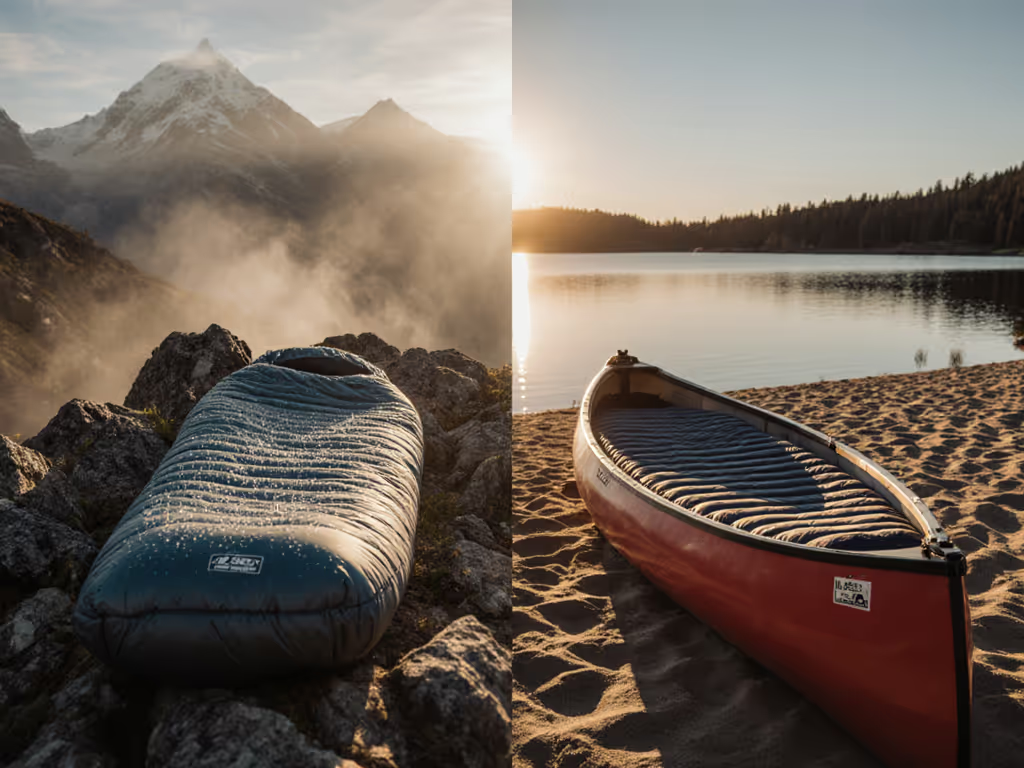
Mummy Sleeping Bags: Compact Warmth Without Sacrifice
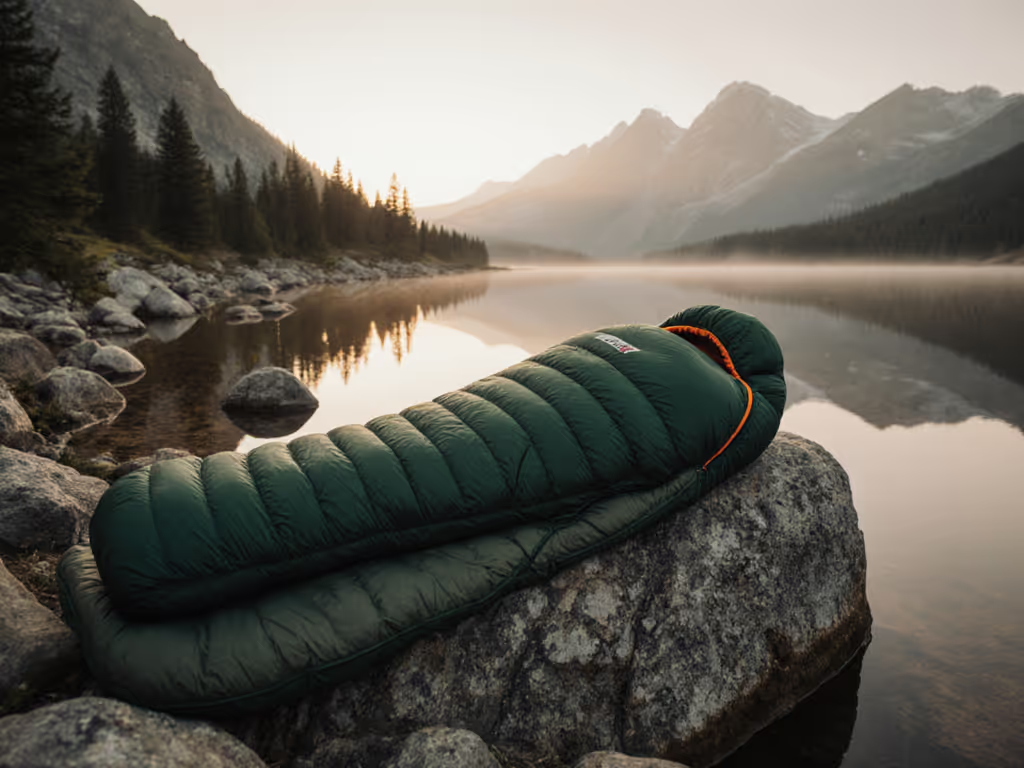
When your night hinges on staying warm without weighing down your pack, mummy sleeping bags offer the precision engineering that transforms potentially shivering evenings into restful retreats. These tapered shelters deliver maximum warmth per ounce, a critical advantage whether you're navigating alpine ridges or coastal forests. Unlike rectangular sleeping bags that waste insulation on dead air space, mummy designs minimize volume while optimizing heat retention. But true comfort isn't just about temperature ratings or compression stats; it's about how the bag interacts with your body's unique needs, movement patterns, and environmental conditions. As someone who's spent years analyzing why even well-rated bags leave sleepers damp or drafty, I've found that the most reliable sleep systems address four pillars: fit, feel, fabric, and freedom. Let's unpack how mummy bags solve fundamental warmth challenges without requiring you to compromise essential comfort.
The Thermal Efficiency Equation
Mummy sleeping bags earn their reputation for cold-weather performance through deliberate geometry. That tapered silhouette isn't just for show (it reduces internal volume by 25-30% compared to rectangular alternatives), meaning your body spends less energy warming excess air. Consider this: a standard 20°F rectangular bag typically contains 30-40 liters of air to heat, while a comparable mummy design cuts that to 22-30 liters. This difference becomes critical when temperatures drop below your bag's comfort rating, as verified by independent EN 13537 testing protocols.
The real magic happens in the details that trap heat where it matters most:
- Contoured hood systems with adjustable drawcords seal heat around your core thermal zone (your head accounts for up to 10% of heat loss)
- Shoulder baffles prevent insulation compression when you shift positions
- Footbox engineering with trapezoidal shapes maintains loft without restricting circulation
- Draft tubes along zippers that block cold infiltration better than single-layer designs
These elements combine to create what thermal physicists call the "microclimate effect": a stable pocket of warm, dry air that buffers against external temperature swings. A field study tracking backpackers in the Rockies confirmed that proper mummy bag technique (including hood adjustment and strategic venting) improved sleep efficiency by 22% compared to rectangular alternatives in sub-40°F conditions.
Beyond Shape: The Fit Factor by Sleep Position
Your sleep position fundamentally alters how a mummy sleeping bag performs. Too many campers select based on temperature rating alone, only to discover uncomfortable pressure points or mysterious drafts that undermine warmth. Let's diagnose these issues position by position:
Back sleepers typically experience the most straightforward mummy bag experience. The tapered design aligns with natural spinal alignment, and the hood system works as intended when lying flat. For optimal performance, look for bags with articulated shoulder girth, not too tight to compress insulation, not so loose that heat escapes.
Side sleepers, this is where drafts become a critical issue. When you roll onto your side, traditional mummy bags compress insulation along your hip line, creating cold spots where your body presses against the bag wall. This is where semi-rectangular adaptations shine, as their modified shape preserves loft at pressure points while maintaining the thermal efficiency of mummy designs. The shoulder area should allow 2-3 inches of clearance when lying down to prevent compression, while the hip girth needs enough room to accommodate body rotation without creating gaps.
Stomach sleepers face the toughest challenge with standard mummy bags. The narrow footbox often forces knees to bend uncomfortably, compromising circulation and warmth. For this position, I recommend seeking "relaxed mummy" designs that widen the lower third specifically for stomach sleepers (a niche but growing category that addresses a common pain point).
Comfort is multi-factor: fit, feel, fabric, and freedom. A bag that scores perfectly on paper might still fail if it doesn't accommodate your unique sleep posture and body dimensions.
Materials Matter: Fabric Choices That Impact Comfort
The fabric shell and lining determine whether your mummy sleeping bag keeps you dry when humidity hits 80% (a crucial factor often overlooked in temperature ratings). Let's decode the material science that separates functional warmth from clammy misery.
Moisture Vapor Transmission Rate (MVTR) should be your secret buying metric. This measurement (expressed in grams per square meter per 24 hours) indicates how effectively fabric breathes under load. Budget bags often sit around 5,000 g/m², while premium performance models exceed 15,000. On a humid coastline trek, I learned this the hard way when my "sufficiently warm" bag left me sticky at dawn, not because it was too hot, but because the fabric trapped my body's moisture output. Switching to a higher MVTR shell transformed my mornings from damp to surprisingly dry.
Here's how different materials perform under pressure:
- Down-filled bags offer superior warmth-to-weight ratios but require hydrophobic treatments to maintain loft in humid conditions. Recent down sleeping bags review data shows that hydrophobic down maintains 60% more loft after moisture exposure compared to untreated alternatives.
- Synthetic insulation performs better in consistently damp environments but adds weight. Modern high-loft synthetics like Climashield Apex now approach down's warmth-to-weight ratio while maintaining 95% of loft when wet.
- Fabric hand (the texture and feel against skin) dramatically impacts sleep quality. Crisp, loud nylon shells disrupt sleep for noise-sensitive people, while brushed tricot linings provide comfort similar to high-thread-count sheets.
When evaluating mummy bags, perform these condensation checks:
- Press your palm against the interior wall, does it feel clammy or dry?
- Note fabric stiffness when compressed, stiffer shells often breathe better
- Check if the zipper has a tube lining that prevents skin contact with cold metal
The Weight vs. Warmth Paradox
Backpackers often fall into the "grams obsession" trap, sacrificing critical comfort features for marginal weight savings. But true efficiency considers your entire sleep system, not just the bag. Here's the reality: a properly sized mummy sleeping bag typically saves 8-12 ounces over rectangular equivalents, but your sleeping pad's R-value contributes equally to warmth. For every 0.5 increase in pad R-value, you effectively gain 5-7°F in bag performance.
The sweet spot for most backpackers? A 15-25°F mummy bag weighing 1.5-2.5 pounds with an 850+ fill power down. This range delivers the optimal temperature deltas for humidity across most shoulder-season conditions. Ultralight models below 1 pound often compromise on critical features like draft collars and sufficient hood insulation, a false economy when you're too cold to sleep.
Remember my core principle: once baseline warmth is met, prioritize comfort factors that ensure consistent sleep. A bag that's 3 ounces heavier but eliminates shoulder drafts will keep you warmer than a "lighter" option that leaks heat through poor fit. Look for "compressible but not crushable" fabrics that maintain loft when packed, not all lightweight shells perform equally.
Real-World Performance: When Mummy Bags Shine (and When They Don't)
Not all cold conditions are equal, and mummy sleeping bags excel in specific scenarios while facing challenges in others. Let's examine the data behind their performance:
Alpine Environments (High Success Rate) In dry, cold mountain conditions (below 30°F with low humidity), mummy bags outperform rectangular alternatives by 8-12°F in actual warmth retention. Their streamlined design also resists wind chill better in exposed bivy situations. The critical factor here is using proper venting: cracking the zipper slightly and adjusting the hood creates controlled airflow that prevents moisture buildup without significant heat loss.
Coastal/Humid Climates (Conditional Success) This is where material selection becomes critical. In high-moisture environments, standard down mummy bags can lose up to 25% of rated warmth when humidity exceeds 70%. Hydrophobic down or high-loft synthetics maintain performance better. The tapered design actually helps here, as less internal volume means less space for moisture to accumulate. Pair with a vapor barrier liner during extreme humidity for best results.
Shoulder Season Backpacking (High Success Rate) For spring/fall trips where temperatures fluctuate widely, mummy bags offer superior adaptability. Their ability to vent effectively prevents the overheating/sweating/chilling cycle that plagues rectangular bags. A clever trick: unzip and drape the bag like a blanket during warmer evenings, then cinch it tight when temperatures drop at dawn.
Car Camping (Limited Advantage) When pack size isn't critical, rectangular bags often provide better value and comfort. The exception? For cold-weather car campers who prioritize warmth, mummy bags still deliver superior performance per dollar invested in insulation.
Making the Right Choice: A Decision Framework
Don't just match a temperature rating to your expected lows, build a sleep system that accounts for your personal physiology and environmental variables. Follow this diagnostic process:
- Assess your sleep position first: Side sleepers need semi-rectangular adaptations; back sleepers can maximize thermal efficiency with standard mummy designs
- Calculate your moisture risk: Coastal/humid environments demand higher MVTR fabrics (>10,000) or hydrophobic treatments
- Match bag size to your pad: Your sleeping bag should be 2-3 inches narrower than your pad width to prevent drafts at the edges
- Test ventilation before committing: Proper mummy bags allow adjustable warmth through hood, zipper, and foot vents
- Consider your "cold factor": If you consistently run 5-10°F colder than standard ratings suggest, bump up your bag's rating by that margin
For the backpacker seeking a compact sleeping bag for backpacking that doesn't sacrifice comfort, prioritize these features:
- Articulated shoulder girth that accommodates your build
- Draft collars with adjustable cinches
- Footbox with trapezoidal design (not cylindrical)
- Zipper with dual sliders for flexible venting
- MVTR-rated shell appropriate for your climate
The Final Draft Check
Selecting the right mummy sleeping bag isn't about finding the "best" option, it is about identifying the most harmonious system for your unique physiology, sleep patterns, and environmental conditions. When that tapered shell feels like a tailored solution rather than a restrictive compromise, you've found the sweet spot where warmth, breathability, and movement intersect. True comfort emerges when you stop fighting your gear and start sleeping with it, adjusting hood drawcords as temperatures shift, venting before overheating occurs, and trusting the fit that accommodates your natural sleep positions.
Still weighing your options between standard mummy, semi-rectangular, and alternative designs? Dig deeper with our comprehensive comparison of insulation types and a personalized sizing calculator that accounts for your specific sleep position and climate needs. Your most restful nights in the backcountry start with understanding how all the elements work together, not just the bag itself.

